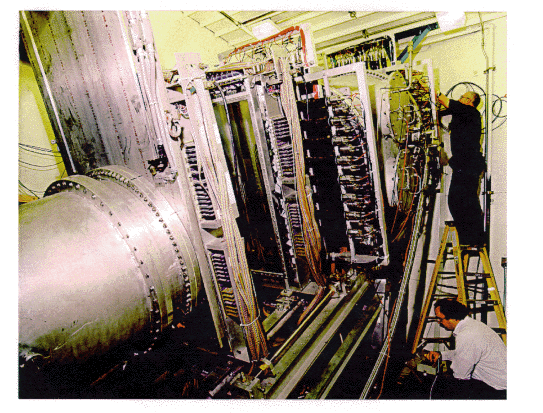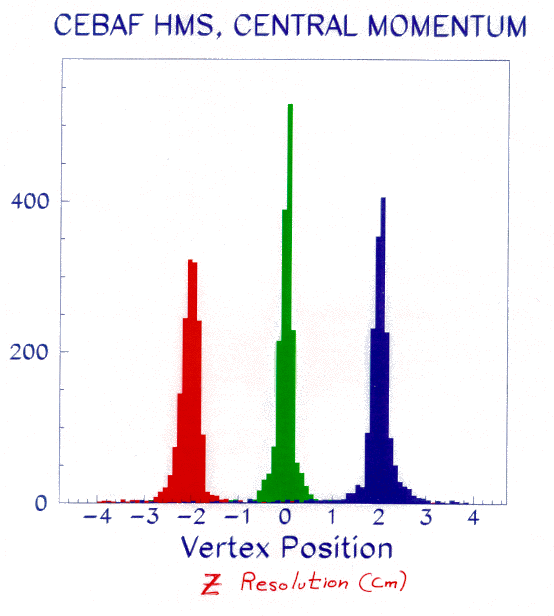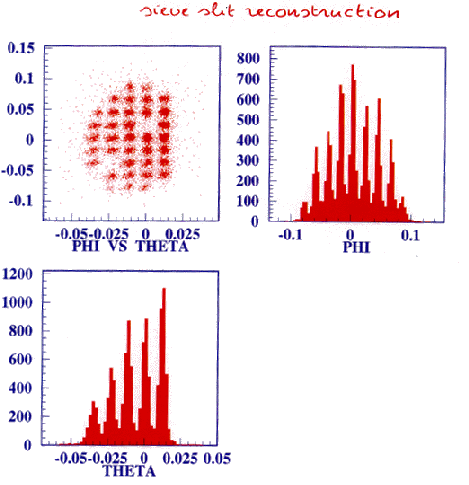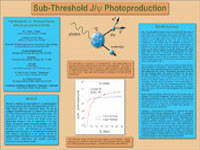JEFFERSON LAB SEARCH
-
Performance of HMS Studied for Two Tunes:
Parallel ⇒ Point Best in plane angle accuracy. Point ⇒ Point Best vertex reconstruction. HMS Transmission Efficiency Studied as Functions of:
- Target location offsets
- Momentum offsets
-
OPTICS TUNE:PARALLEL-PTPT-PT
MOMENTUM:
Maximum Central Momentum
Momentum Bite[(Pmax-Pmin)/P0]
Momentum Resolution delta p/p7.5 GeV/c
18%
<0.1%7.5 GeV/c
18%
<0.1%ACCEPTANCES:
Solid Angle
Min. Central Scattering Angle
>6 msr
12.5o
>6 msr
12.5oAngle Measurement PrecisionIn Scattering Plane
Out-of-Plane -
Pictured is the Hall C detector for the High Momentum Spectrometer (HMS). Contained in a concrete shield house, this detector is used for particle identification after the beam hits the target and the scattered particles are focused onto this detector . The detector contains several instruments that measure different elements of the particles including: drift chambers, hodoscopes, and gas and lead-glass Cerenkov detectors.

-
Online Documentation for Running Hall-C
(username/password are available from Hall C Counting Room) -
-
The Hall-C Moller Polarimeter measures the polarization of the electron beam arriving in Hall-C. It does so by observing the rate of production of Moller electrons at 90 degrees in the center of mass when the beam strikes a thin iron target. The outer shell electrons in the iron are polarized parallel (or anti-parallel) to the beam direction by a 4 Tesla magnetic field. The Moller electron production rate differs when the beam and target electron spins are aligned parallel or anti-parallel to one-another. Measurement of this rate difference provides a measure of the beam polarization.
-
Jefferson Lab is home to the world's most powerful tunable Free-Electron Laser.
Jefferson Lab is home to the world's most powerful tunable Free-Electron Laser. The FEL uses the same superconducting radiofrequency technology as Jefferson Lab's CEBAF accelerator. The FEL has been used to conduct an extensive range of applied and basic research.Unique to the FEL is the range of light it can produce. This tunability allows scientists to test multiple wavelengths of light. Another innovation that makes Jefferson Lab's FEL unique is its use of the energy-recovery linac, which allows the FEL to recycle energy from its electrons.
-
The new experimental Hall D will use the electron beam to produce a coherent bremsstrahlung beam and house a solenoid detector to carry out a program in gluonic spectroscopy to experimentally test current understanding of quark confinement.
The 12 GeV Upgrade is highly cost effective due to existing features of the Continuous Electron Beam Accelerator Facility (CEBAF). The superconducting radiofrequency linear accelerators contain superconducting niobium cavities operating, on average, at 50 percent above their design specifications in accelerating gradient and Q. The success of this technology opens up the possibility of a relatively simple, inexpensive upgrade of CEBAF's top energy.




